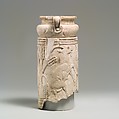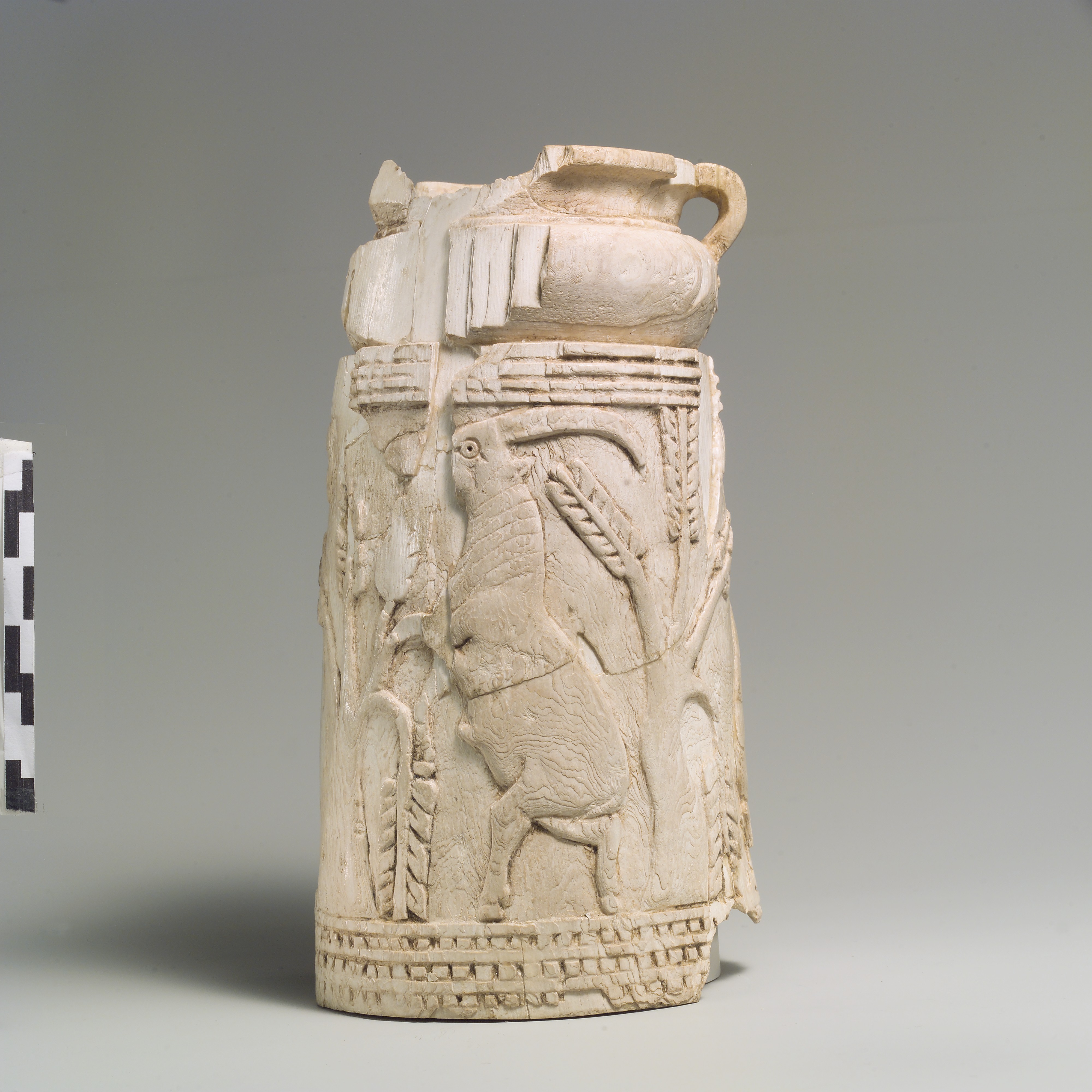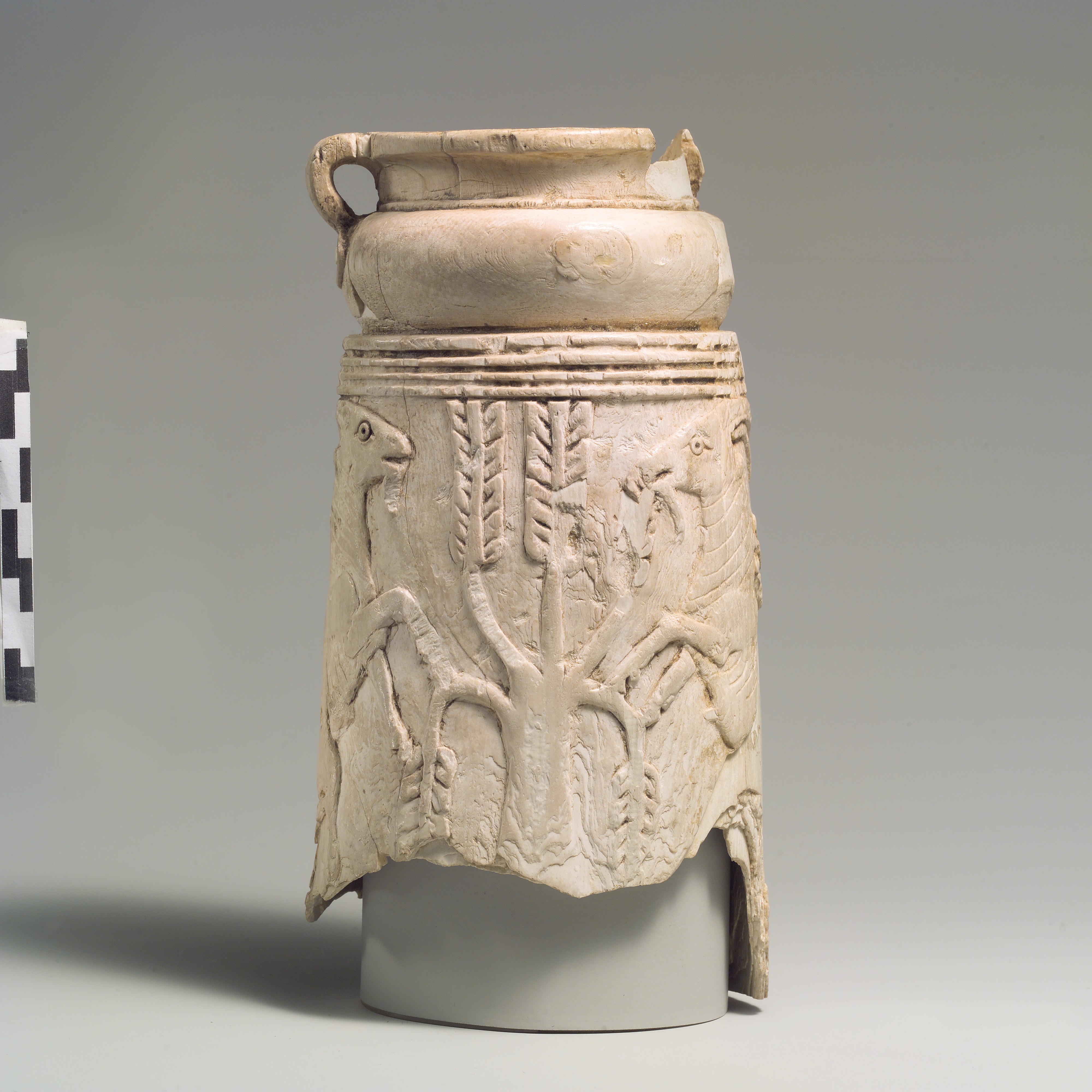Levantine vessel with rampant goats and olive trees
Not on view
Carved from a single piece of elephant ivory, this vessel takes the form of a tapering cylinder with a small handled cup on top. The cup has been damaged and may have had a second handle opposite the one which is preserved. The base of the vessel is likewise now missing. Carved in relief around the base of the vessel is a scene framed by decorative borders at top and bottom, showing two male goats grazing from trees. A third tree of the same type is represented on its own, without a grazing goat. The goats stand on their hind legs in order to reach tender leaves high on the plant, a typical behavior of these animals. The motif of a goat standing upright to graze from a plant appears in ancient Near Eastern art as early as the Late Uruk period. As the goat’s feeding posture is identical to its mating posture, the image has been interpreted as exemplifying the fertility and abundance of the natural world of plants and animals. The drooping branches of the trees and the heavy bodies of the goats give a convincing sense of mass and volume to the image. The probable identification of the vegetation as olive trees suggests a connection with Aegean art in which olive trees are frequently depicted, notably in Minoan wall paintings from Crete.Carved from a single piece of elephant ivory, this vessel takes the form of a tapering cylinder with a small handled cup on top. The cup has been damaged and may have had a second handle opposite the one which is preserved. The base of the vessel is likewise now missing. Carved in relief around the base of the vessel is a scene framed by decorative borders at top and bottom, showing two male goats grazing from trees. A third tree of the same type is represented on its own, without a grazing goat. The goats stand on their hind legs in order to reach tender leaves high on the plant, a typical behavior of these animals. The motif of a goat standing upright to graze from a plant appears in ancient Near Eastern art as early as the Late Uruk period. As the goat’s feeding posture is identical to its mating posture, the image has been interpreted as exemplifying the fertility and abundance of the natural world of plants and animals. The drooping branches of the trees and the heavy bodies of the goats give a convincing sense of mass and volume to the image. The probable identification of the vegetation as olive trees suggests a connection with Aegean art in which olive trees are frequently depicted, notably in Minoan wall paintings from Crete.
Due to rights restrictions, this image cannot be enlarged, viewed at full screen, or downloaded.
This artwork is meant to be viewed from right to left. Scroll left to view more.




